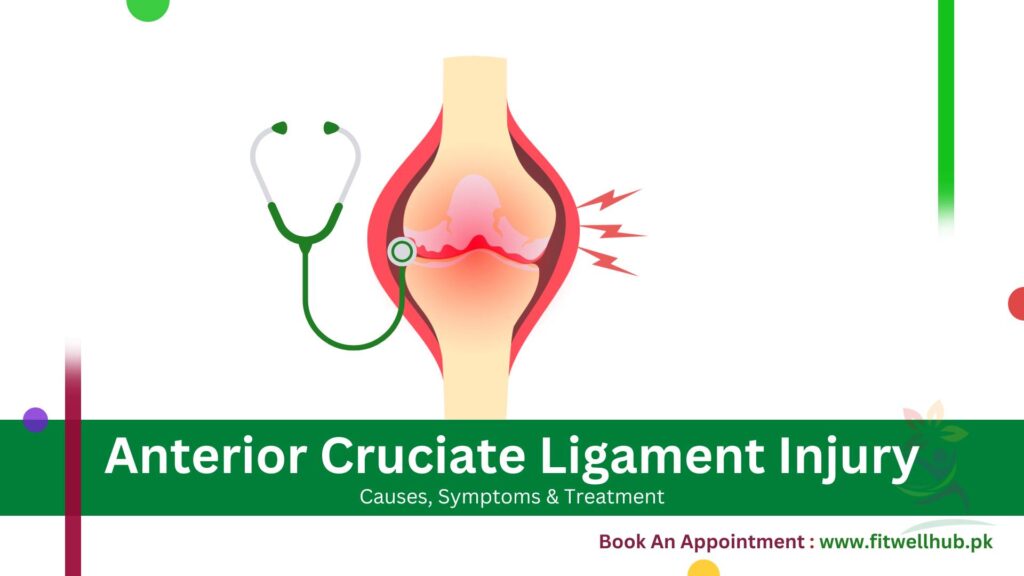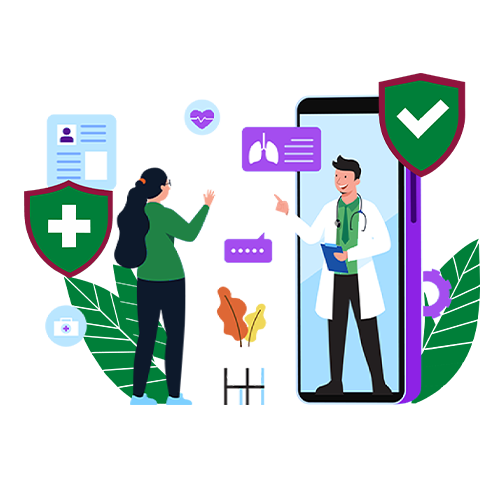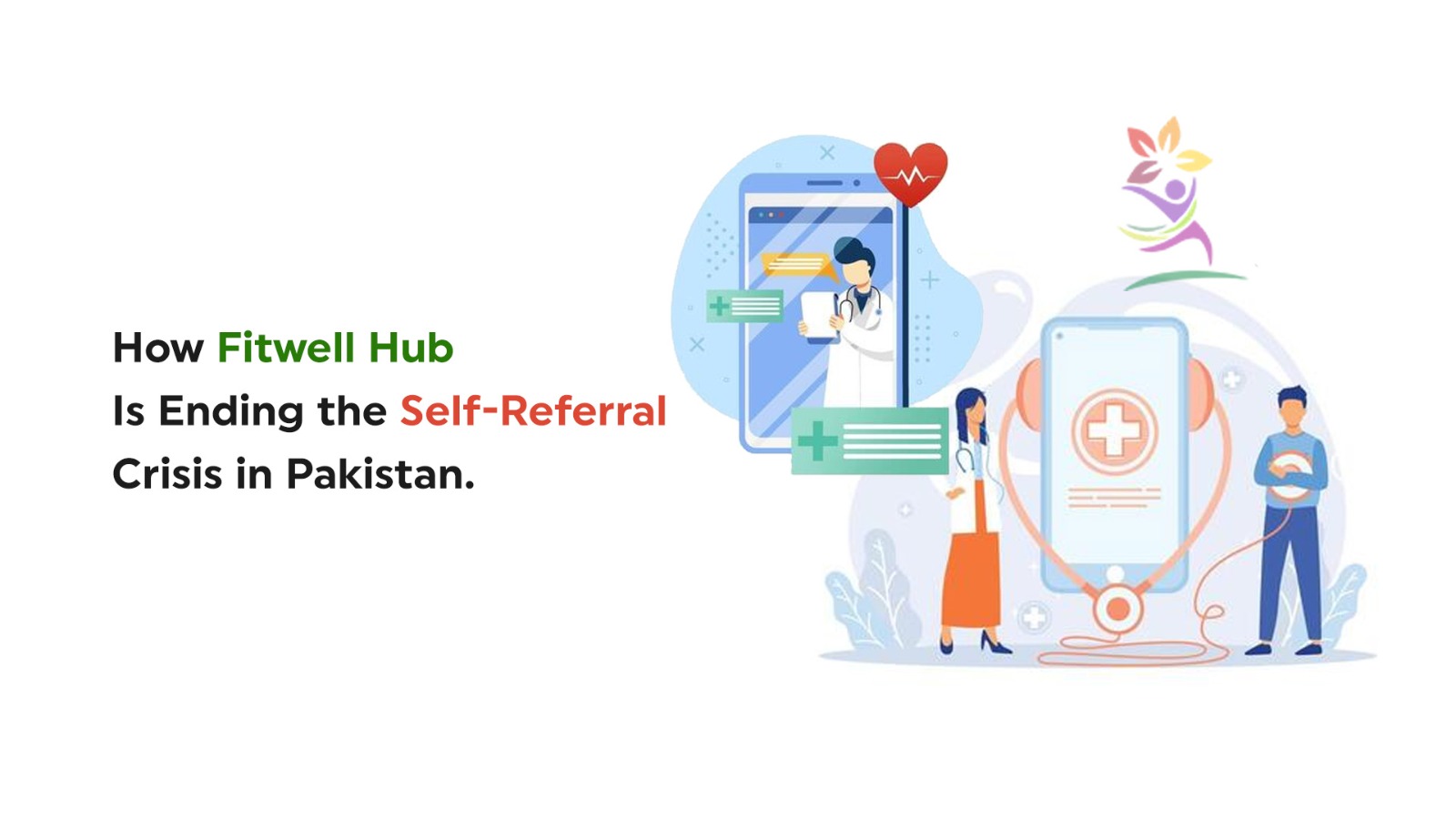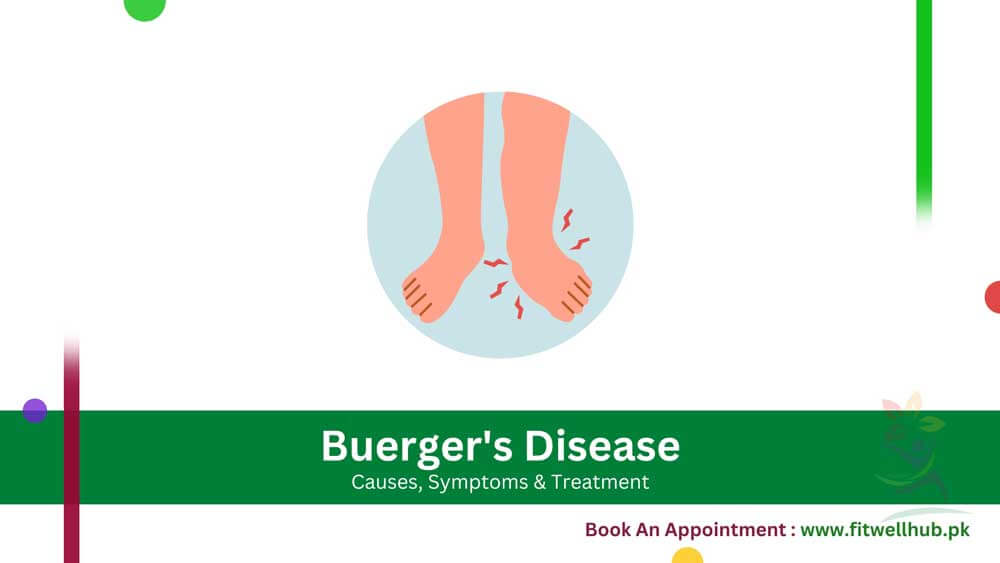ACL (Anterior Cruciate Ligament injury) is commonly a knee injury. ACL injury tear occurs when the main ligament in the knee’s joint becomes stretched, half-teared, or fully torn. It provides a connection between the thigh bone and shin bone and is responsible for rotational motion and stability to the knee.
Quick Links
ToggleWhen an ACL gets injured, the main impact is on the stability and movement of the knee. It can cause severe pain, swelling, and a popping sound in the knee during any movement. ACL injuries typically occur during sports activities where sudden pressure is exerted downward on the knee during abrupt changes in movements, like in football, basketball, soccer, etc. Similarly, an Achilles Tendon Rupture, another common sports injury, occurs when the tendon at the back of the ankle tears, resulting in pain and difficulty in foot movement, further limiting an athlete’s performance.
Mechanism of an ACL injury
Before treating ACL injuries we have to understand its mechanism. Anterior Cruciate Ligament injury (ACL) is usually caused by irregular motions of the knee and when excess pressure is put on the knee during high jumping. ACL injury mechanism usually consists of various movements given below:
- Irregular changes in direction
- sudden slowdown during running
- Bending and pivoting motion
- An extra extension of the knee joint
- Direct collision or hit with the knee
These motions can exert extra pressure on the ACL and can cause serious injury to it.
Different types & grades of ACL injury
ACL injuries can be categorized into different types or grades depending severity of the injury whether it’s a moderate level of stretching or fully torn.
Grade I (Mild Sprain)
A mild sprain in the knee includes the stretching or little tearing of the ACL, while still maintaining stability in the knee joint. Although there may be some pain and swelling, the damage is not very severe.
Grade II (Partial Tear)
A partial tear occurs when some fibers of the ligament are torn, while others remain intact. Moderate instability in the knee joint occurs in this grade and may require more extensive treatment and rehabilitation than a mild sprain.
Grade III (Complete Tear)
A knee joint with a complete tear of the ACL is the most severe case of this injury. In this type, it is completely torn causing the knee joint to become unstable and the ligament is pulled off the bone. An individual with ACL injuries cannot carry heavy weights and do activities that require abrupt movements and pivoting of the knee joint.
ACL injury symptoms and pain levels
ACL injury symptoms depend upon the severity of the injury and the extent of pain. Some of the major symptoms are given below:
- Instability in knee joint
- Difficulty in walking and carrying weights
- A popping sound from the knee joint during movement
- Speedy swelling
- Restricted movements
- Tenderness along with joint line
A full ACL tear increases pain and swelling, causing the knee to feel unstable and “wobbly” during weight-bearing.
When to See a Doctor
When you observe swelling, severe knee pain, instability, hear a popping sound at the time of injury, or have difficulty moving the knee, you must visit a doctor as soon as possible because it may become a serious ACL.
Early medical attention may decrease the chances of more damage and complications, resulting in better outcomes. Regular checkups and screening are essential for individuals with a record of knee injuries in the past, especially for athletes.
Prevention programs and techniques
Although recovering from an ACL injury can be a hectic task, there are many prevention programs as well as techniques that can help in decreasing the chance of such injury. Here are some effective strategies:
1- Neuromuscular training programs
These programs focus on improving balance, proprioception (joint awareness), and movement mechanics through exercises that challenge stability and control. Examples include plyometric training, agility drills, and balance exercises.
2- Strength & conditioning
Including strength training exercises for the lower body, core muscles as well as hip muscles can offer better knee joint stability and support which reduces chances of getting ACL injuries.
3- Proper technique & form
Paying attention to correct movement patterns and techniques during sports or other activities will help reduce excessive stress on the knee joint, and prevent any possible Anterior Cruciate Ligament injury (ACL) damage.
4- Warm-up & cool-down routines
Performing dynamic warm-up before exercise, and stretching afterward may help prepare one’s body to meet physical challenges while at the same time reducing risks of damage happening in between.
5- Injury screening & assessment
Routine screenings by professionals who specialize in this area should be conducted regularly. This will benefit in checking out potential risk factors or biomechanical issues that may increase the chances of suffering from an ACL tear.
6- Appropriate equipment & footwear
When a person wears fitted and sport-specific shoes as well as protection gear, they will get support; hence, cushioning lowers their injury chances.
7- Gradual progression & rest
By progressively increasing the intensity and duration of activity through training while allowing sufficient time for recovery and rest. This will reduce the development of overuse injuries and ACL injury risks.
diagnosis & treatment options
Diagnosis options for ACL injury include a physical checkup, previous medical history, and imaging diagnostics such as CT(computed tomography) scan, X-rays, or MRI (magnetic resonance imaging), etc. Which treatment option should be used to cure ACL injury highly depends upon the severity of the injury, level of activity, current health condition, and age. Some of the treatment options are given below:
- Rest, ice, compression, and elevation (RICE) to reduce swelling and pain
- Immobilization with a knee brace or splint
- Physical therapy to improve range of motion and strength
- Medications (Anti-inflammatory drugs) to manage pain and inflammation
Surgical treatment, such as ACL injury operation, may be recommended for more severe injuries or in cases where the patient desires to return to high-level sports or activities that involve pivoting or cutting movements.
ACL injury recovery timeline & healing process
ACL injury healing timeline and healing process significantly depend upon the level of severity and extent of pain, choice of treatment option whether it’s a surgical or nonsurgical treatment, and an individual commitment towards recovery. One person can heal within 3 months after a partial ACL tear through physical therapy, but this would not guarantee full recovery with a higher chance of re-injury. The recovery time after surgery is normally 9 months including the primary healing processes after injury and then physical therapy to prevent re-injury. Different recovery phases to recover completely from ACL injury are discussed below:
Here is the content converted into a proper table format:
| Phase | Time Frame | Key Focus |
|---|---|---|
| Initial Phase | 1-2 weeks | Managing pain, swelling, and inflammation using the RICE (Rest, Ice, Compression, Elevation) technique; sometimes immobilization. |
| Early Recovery Phase | 2-6 weeks | Regain range of motion, light strengthening exercises, gradually introducing weight-lifting activities, more frequent physiotherapy sessions. |
| Intermediate Recovery Phase | 6-12 weeks | More complex exercises, proprioceptive training (balance and coordination), low-impact activities like swimming or cycling, adjusted based on recovery progress. |
| Late Recovery Phase | 3-6 months | Functional and strengthening exercises (jumping, agility drills, plyometrics), sports-specific activities (e.g., kicking, dribbling for soccer players). |
| Return to Sport/Activity Phase | 6-12 months | Resume previous sports/activities, continue maintenance workouts to prevent re-injury if recovery is successful. |
Self-care tips for ACL injury recovery
Different self-care techniques can help in the recovery process from ACL injury with the proper medication and physical therapy sessions:
- Follow the RICE protocol: RICE protocol involves a combination of Rest, Ice, Compression, and Elevation. This protocol will be helpful during the initial stages of recovery in reducing swelling and pain.
- Stay hydrated and eat a balanced diet: Proper hydration and nutrition are crucial for tissue healing and recovery.
- Get adequate rest and sleep: Allowing your body to rest and recover is essential for the healing process.
- Manage stress and anxiety: Stress and anxiety can both delay a fast recovery from an Anterior Cruciate Ligament injury (ACL). In this case, one should practice different stress management methods such as yoga, and meditation.
- Use assistive devices as recommended: Assistive devices such as braces, crutches, etc. can assist knee joints in little movements during the recovery journey.
- Adhere to the prescribed rehabilitation program: Little movements in knee joints during the healing period can be assisted using assistive devices like braces, crutches, and so on.
- Be patient and persistent: ACL injuries take time to heal fully, requiring patience and perseverance for successful recovery. Incorporating self-care strategies, like proper rest, physical therapy, and nutrition, into your recovery plan can significantly support your healing process. These methods, when consistently followed, may not only promote healing but also potentially reduce the overall recovery time effectively.
How to manage swelling & pain after an ACL Injury?
The two major symptoms that are observed most often in individuals who have suffered this type of injury are swelling. Below are some methods for dealing with swelling and pain:
1- Apply ice
To reduce swelling in the injured knee you can apply ice. Place an ice pack or bag of frozen peas wrapped in a thin towel on top of hurt knees for 15-20 minutes several times a day.
2- Elevate the injured leg
Keeping the injured leg elevated above the heart level may help reduce swelling by promoting better drainage of fluid from the joint.
3- Use compression:
Swelling can be reduced by using a knee sleeve or compression bandage. It will also give support to the knee joint.
4- Take over-the-counter pain medication
Ibuprofen and naproxen are examples of Non-Steroidal Anti-Inflammatory Drugs (NSAIDs) that help in decreasing inflammation and reducing pain. Always consult your doctor before taking any medication.
5- Engage in gentle exercises
Mild exercises may be prescribed by your physical therapist after an initial reduction in swelling and relief in pain, which can improve flexibility and promote recovery.
6- Consider alternative therapies
Consider alternative therapies like acupuncture, massage, or transcutaneous electrical nerve stimulation (TENS) units which may give relief in pain and swelling to some people. These alternatives will be helpful in speedy recovery.
Frequently Ask Questions (FAQ’s)
One can recover from an ACL injury by doing rest, physical therapy, immobilization, medication to relieve pain and swelling, and surgical treatment in case of severity of injury.
An ACL injury can be tested through physical examination, and imaging tests such as MRI, CT scan etc.
Half-torn ACL can be recovered without complicated surgery by following the proper rehabilitation process recommended by a doctor. However, a completely torn ACL can be healed with only the surgery process.
ACL tear complete recovery can take 6 to 12 months depending upon the individual’s health conditions and injury severity.
Moderate instability in the knee joint occurs in this grade. It requires no surgery treatment but may need more extensive treatment and rehabilitation than a mild sprain.












